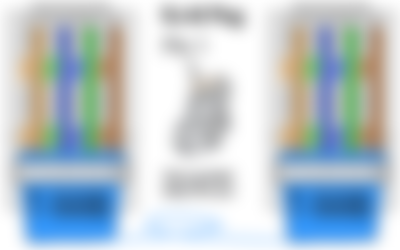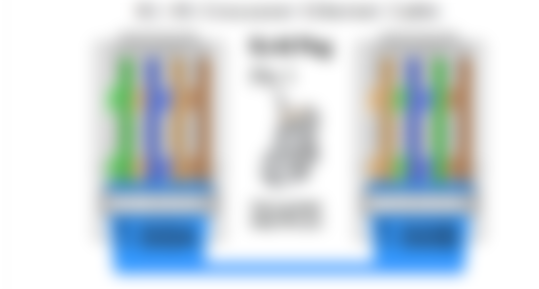Ethernet Wiring
Isn't that from the prehistory?
As we're in the age of Wi-Fi and wireless connections to our phones and PCs, we seem to forget the past and the older ways which we used to connect ourselves between different devices, through wires. In this particular article we'll talk about Ethernet, a protocol employed to establish communications between different Data Terminal Equipment (DTE) and/or Data Communication Equipment (DCE), via the use of twisted pair wires with RJ-45 with an specific kind of wiring. Let's begin by establishing more clearly what exactly Ethernet is.
What does Ethernet Means?
Ethernet, a protocol mostly used in LAN networks due to the limited space It can cover, is a technology employed to facilitate communications between two pieces of equipment in a Data Network in order to establish a link between them (Network) and exchange Data Packages, all through to the use of an specific type of wiring.
What kind of wire does Ethernet uses?
The type of wiring required for Ethernet wiring is a twisted pair wire, implemented in a former way to connect telephones, computers and other terminals to a same network or wiring, all this being achieved due to the fact that It can handle higher frequencies when communicating Data. Twisted pair wires come in different varieties, such as UTP or unshielded twisted pair, which, as Its name says, has twisted pairs that are unshielded, which lowers Its costs, though this kind of cable usually produces more errors than the other varieties, and It limits the extension of a network due to the regeneration of the signal It can produce.
Another variation of the twisted pair wire is the Shielded Twisted Pair Wire or STP, which now has shielding made of alluminum, which reduces the amount of interference and errors that It can cause, though It increases Its cost.
FTP is pretty simmilar to the UTP, with the difference that each par of cable Is shielded with an alluminum layer, and being used more for inalambric applications.
How to wire an Ethernet Cable?
In order to establish an Ethernet Wire properly with a Twisted Pair, we will need a type of connector fitting to the task of establishing the connection to the ports of our data equipment, using the RJ-45 type of connector. We'll also need a particular tool, a punch down tool that's compatible with the RJ-45 format, which will be used to fasten the wires in the connector and establish a proper communication.
Before applying the practical part of the process, we got to understand that there are two types of rules employed for Ethernet connection, the T-568A and T-568B, where, depending on the kind of connection we want to make we can establish two types of wire, Straight Through and Crossover.

The Straight Through cable is used for establishing connections between different Data Equipment (For example, a Switch and a Computer) and permit communications between them. For this we'll use an unique type of standard between T-568A and T-568B in both extremes of the cable.

For the crossover cable, we use It in general to connect Data Devices directly, being more frequently used with equipment of the same type, such as two computers. For this type of connection we use both T-568A and T-568B standards, wiring the 568B with the connector in one extreme and the 568A with the other at the opposite extreme.

Now, in order to establish a correct connection of the RJ-45 with the twisted pair we should follow the steps presented:
1.- Cut the coating of the cable in the specified area where you want to establish the connection with the Rj-45 to reveal the twisted pairs, If you observe that one cable of all the pair results damaged during this process, you can cut this portion entirely and just remove the coating again in other section.
2.- With the Rj-45 facing down (This meaning that clip is pointing away from your direction) introduce the cables in the connector following the diagram for the required standard.
3. - Put the Rj-45 with all the wiring in It into the RJ-45 slot of the Punch-Down tool and press in order to get It all in Its place.
4.- Repeat for the opposite extreme of the cable.
5.- Verify your cable by connecting two different data equipment between them.
Enjoy your new Ethernet connection!
We hope that the presented article can be of instruction to you, explaining in detail the process of wiring an Ethernet cable and all the theory that goes with. We wish you the best of luck while doing It!



this is good but its better if you had provided a video of the steps